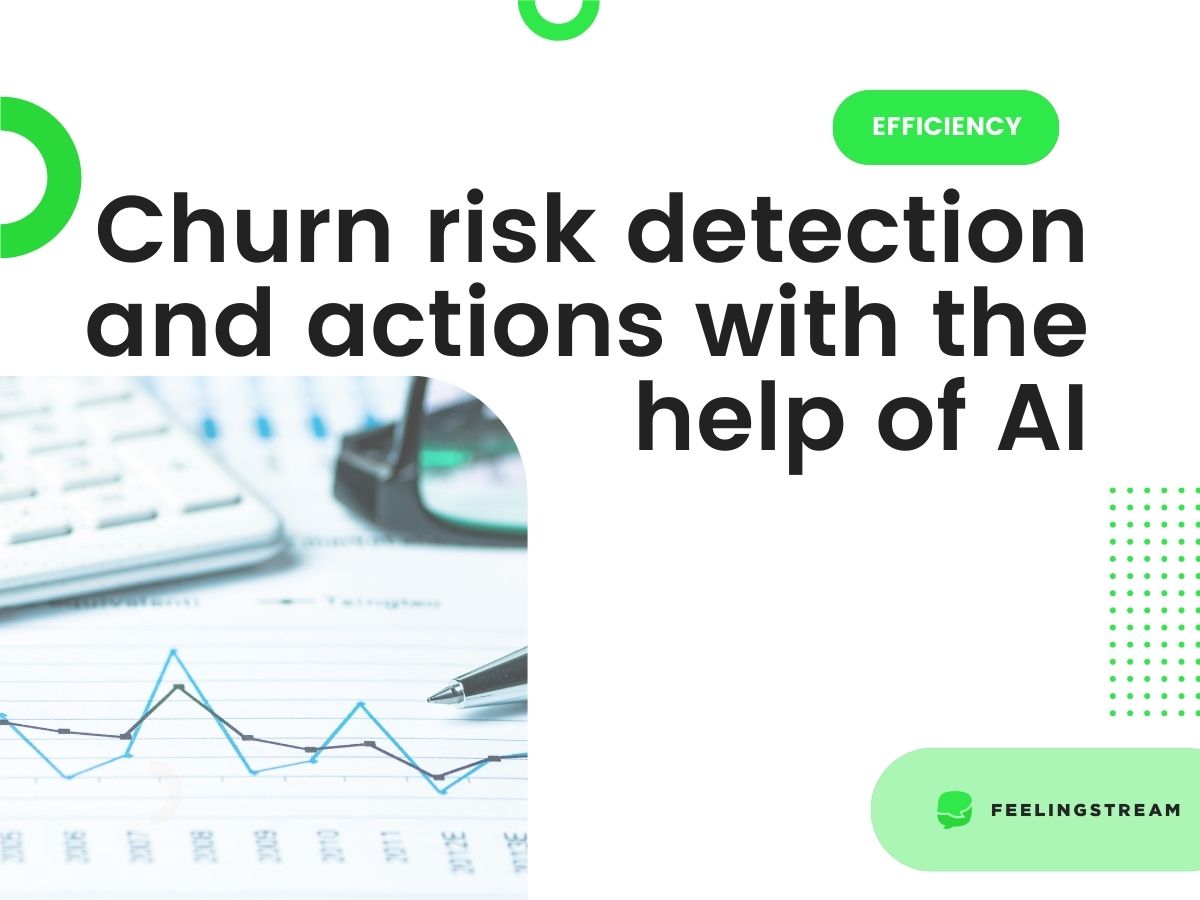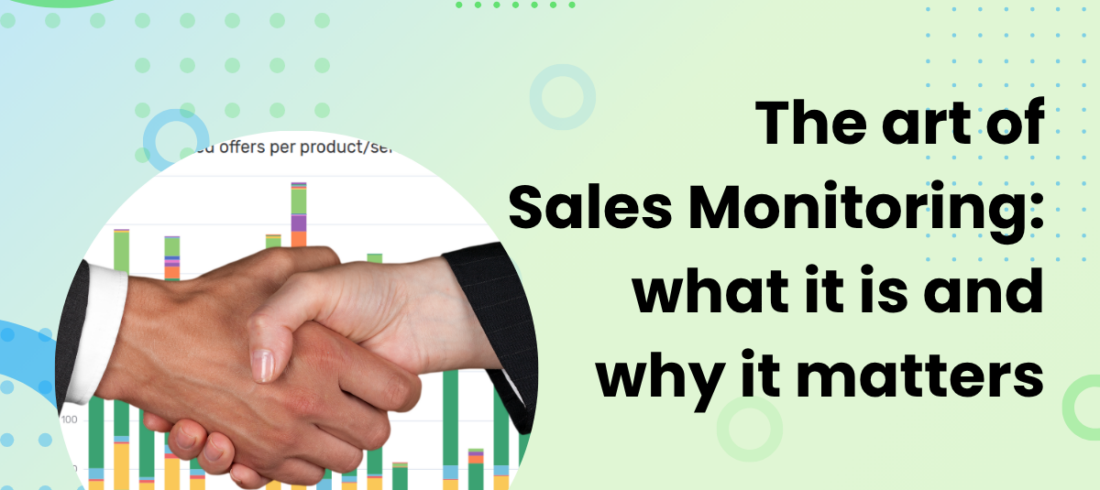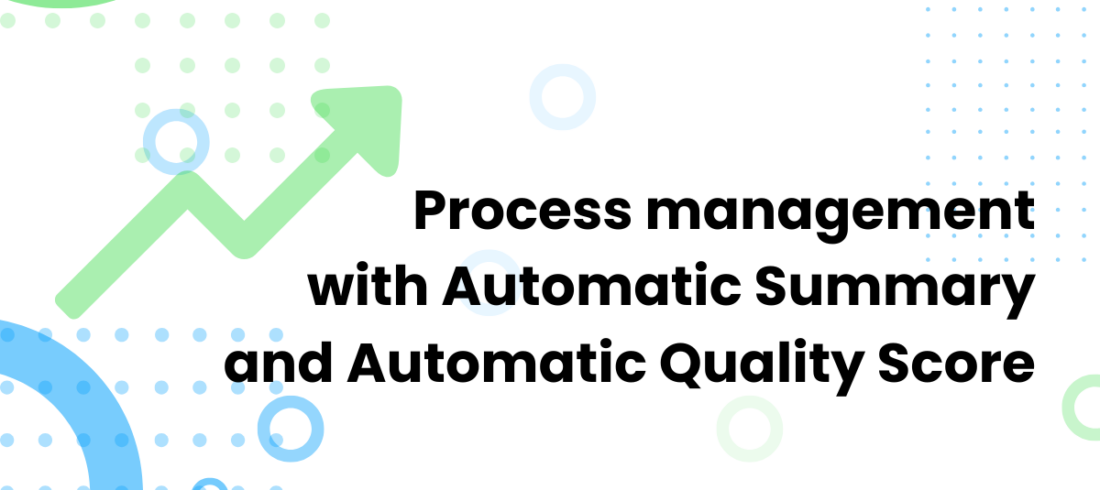When a customer is dissatisfied with a company’s services or decides to leave a company, there are usually warning signs. The company can manage and keep down churn risk if they knowingly work towards this target. This means analyzing customer interactions and customer activities, then taking steps to avoid losing customers before they leave. All relevant managers and stakeholders need to take part of these processes.
Every leaving customer is a loss for a company. In this post, we will go into the subject of managing churn rates via analyzing customer actions and interactions.
Could you catch your customers before they are out of the door?
To understand the risk of losing customers, one needs to look at the current churn rates and think about what is acceptable for the company. If your churn rate is 1%, that percentage may seem small. The number of actual customers behind that one percent may be quite big.
If your customer has already stepped out of that door, it’s often too late to go running after them. There are definitely warning signs to customers thinking about leaving. The information may be there, but noticing it and acting on it is something that can be difficult.
What are the warning signs for churn risk?
Customers tend to start behaving differently or show warning signs before they actually decide to leave. They might unsubscribe from your emails, stop checking your websites or call customer service to ask for a better offer on their current plan or service. Such customers also tend to tell customer service about issues with their services or show negativity towards customer service.
When it comes to checking customer interactions on websites, you may look at the topics that they look into in your FAQs (like cancelling services for example). If customers unsubscribe to your emails, this may hint at dissatisfaction.
When it comes to customer recovery, the faster that the company can bring the customer back, the cheaper it is for them. Action has to be taken as soon as risk is present.
Analyzing customer interactions to understand churn risk and train agents
What is a bit more straightforward is the way that the customer communicates with customer service. When you listen to call recordings, you may catch some phrases that specifically show that there is a churn risk. If you use Feelingstream’s call analytics platform to go through the call transcripts, you can find those calls, group and analyze them to learn from your customers. With Feelingstream, you can enrich your data with different metrics and look at customer sentiment, even set up assignments to react to certain situations in customer interactions, such as churn.
Churn risk is very high when a customer explicitly states that they are thinking about leaving your services or say that they do not think they would have such issues with a competitor of yours. Such customers may have already looked into what your competitor has to offer and may be considering leaving.
If the customer mentions that they have called your customer service multiple times or have repeating issues, their dissatisfaction with the services may lead to them leaving. If customers are unable to use services properly and have to keep contacting customer service, their frustration with the service and company will grow over time, so they need some extra attention.
Taking care of your existing customer base and reacting when churn risk arises
When it comes to the cost of keeping old customers versus finding new ones, then focusing on new customers is five times more expensive than keeping existing customers happy. The quality manager needs to firstly look into the “churn risk phrases”. The next step is to analyze the way that agents handle customers with churn risk. When the manager knows, how agents save customers, they can gather valuable data. Quality manager and other stakeholders can then use this information to improve the customer service as a whole. Such work does need some time and a thorough analysis of call transcripts.
Good customer service that catches the churn risk is more likely to save such customers and keep them from leaving. If managers train agents to look for warning signs, they are much more effective in working with unhappy customers. This will give agents thought-out strategies for such instances.
Get your team involved, lowering churn rates is a group effort
Reacting to churn risk, dealing with churn rate, and making plans to keep existing customers happy is a process that requires a lot of parties to be involved. The head of retail needs to take part of this process to reach sales goals and keep subscriptions going. Marketing and telemarketing have to be on top of their game to make offers and advertise to customers that are thinking about leaving.
If customer service agents are on a phone call that ends in the customer service agent thinking that the customer will leave the company, maybe a callback team specialized in bringing customers back with special offers is the way forward? The marketing team can send special campaign deals to customers who have given signs of dissatisfaction with services.
If analysis already shows that there is a churn risk with a customer, it is also possible that the IT team can do something to alert customer service agents to pay special attention to such customers even before the churn risk becomes evident in their phone call. For example, they could add a warning on their dashboard during the call.
Churn rate shows the health of your company, so you need to pay attention
If you initially thought that your company can live with a 1% churn rate, it really should not. 1% per month makes 12% per year. For subscription-based companies, the churn rate is a health indicator. Companies should always strive to decrease churn rate, improve customer service, target marketing, etc. Customer segmentation can also be a big part of this work. Problematic customers can be targeted based on their needs and profiles. The main point is that all stakeholders need to take part in this continuous effort.
If you wish to find out more about how you could use Feelingstream’s automated call analytics platform to measure your churn risk and decrease churn rates, contact us for a live demo. Also read more about making your business more efficient with AI.




